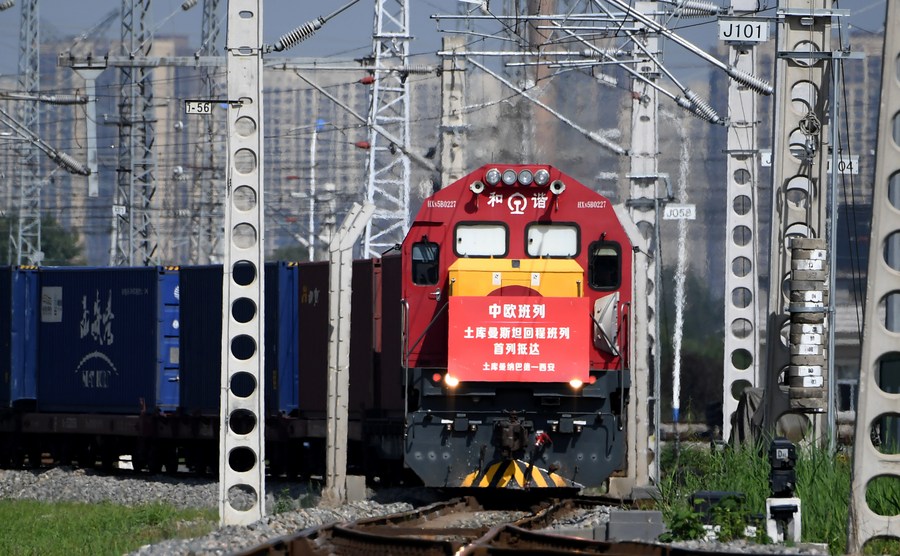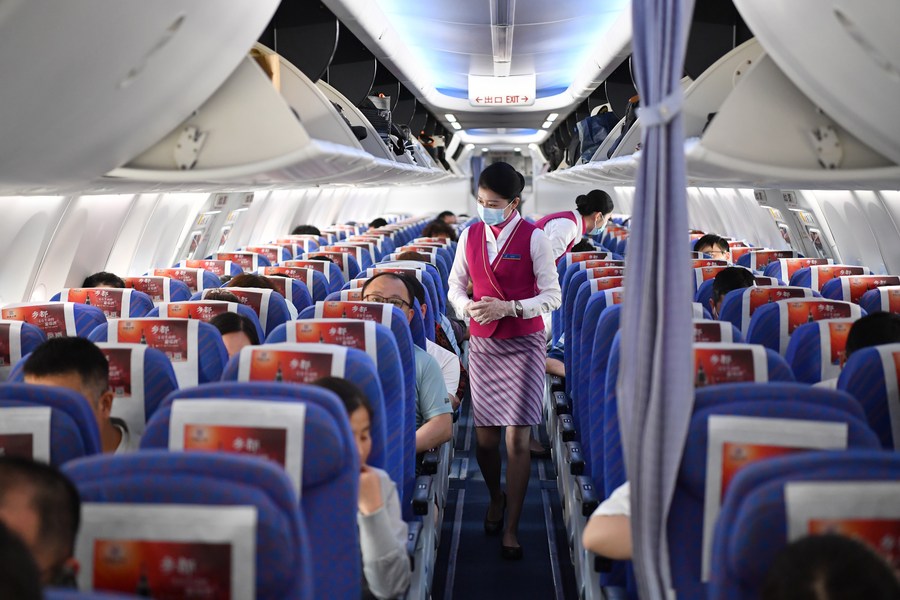China, Central Asia ready for milestone summit to build closer ties
As a milestone summit is about to open, China and five Central Asian countries are set to build a closer community with a shared future and send messages of solidarity, peace and development in a volatile world.
Chinese President Xi Jinping will chair the China-Central Asia Summit, the first in-person summit among heads of state of China and Central Asian countries, scheduled for May 18 and 19 in Xi'an, northwest China's Shaanxi Province. The leaders are expected to draw up new blueprints for China-Central Asia cooperation, according to Xinhua.
The summit is seen as the latest landmark in the vibrant high-level interactions, economic cooperation and people-to-people exchanges between China and Central Asian countries.
Political mutual trust
In 2013, Xi went to Central Asia for the first time as China's head of state, visiting Turkmenistan, Kazakhstan, Uzbekistan and Kyrgyzstan.
"China and Central Asian countries are friendly neighbours connected by common mountains and rivers. China highly values its friendship and cooperation with these countries and takes them as a foreign policy priority," Xi said during the trip.
China's relations with Central Asian countries were upgraded during the visits. The next year, Xi paid a state visit to Tajikistan, during which important consensus was reached on deepening bilateral ties.

In the past decade, Xi visited Central Asia seven times and also hosted multiple Central Asian leaders in China. Xi has had in-depth exchanges with people from different sectors in the region. China's relations with Central Asian countries have become a model for building a new type of international relations.
There were many unforgettable moments. Xi donned traditional Tajik attire, referenced Kyrgyz adages, explored ancient cities in Uzbekistan and a small town in Turkmenistan, and recounted the story of a Kazakh student who donated blood in China. On top of these, Xi engaged closely with the leaders of the five Central Asian countries.
Guided by head-of-state diplomacy, the friendship and political mutual trust between China and Central Asia have been constantly deepened.
China and Central Asian countries have supported each other on issues involving sovereignty, independence and territorial integrity, and firmly supported each other's development paths and governance models. They have joined hands to fight terrorism, separatism and extremism, transnational organized crime and drug trafficking. They have also resolutely opposed external interference or attempts to instigate "colour revolutions."
"The key to the successful cooperation between China and the five Central Asian countries over the past three decades lies in our abiding commitment to mutual respect, good-neighbourly friendship, solidarity in trying times, and mutual benefit," Xi said when he addressed a virtual summit to commemorate the 30th anniversary of diplomatic relations between China and Central Asian countries in January 2022.
Win-win cooperation
Speaking at Nazarbayev University in Kazakhstan on Sept. 7, 2013, Xi for the first time proposed jointly building an "economic belt along the Silk Road."
Over the past decade, Central Asian countries have become pioneers in promoting the Belt and Road Initiative (BRI) and have built the region into an example of high-quality BRI development. From fully loaded trains to humming production lines and natural gas pipelines, vigorous cooperation has resulted in common development.

A freight train carrying more than 260 new energy vehicles arrived in Tashkent, the capital of Uzbekistan, earlier this month. Marking the BRI's 10th anniversary, the train's 12-day journey began in Xi'an, the ancient Silk Road's starting point.
Currently, 17 railway routes connect Xi'an with Central Asian countries and many other Asian and European destinations, with more than 1,100 train trips made in the first quarter of the year.
Roaring trains are the epitome of robust trade between China and Central Asian countries. In 2022, trade volume hit a historic high of 70.2 billion U.S. dollars, up by over 100 times since diplomatic ties were established about three decades ago.
From the China-Central Asia gas pipeline and the Qamchiq railway tunnel in Uzbekistan to the Zhanatas wind power station in Kazakhstan and the north-south highway in Kyrgyzstan, a number of cooperation projects have facilitated industrial upgrades and livelihood improvements.
Officials and experts expect that the summit will open a new chapter in China-Central Asia cooperation.
Shu Jueting, spokesperson for the Ministry of Commerce, said China will take the summit as an opportunity and work with the five Central Asian countries to push economic and trade cooperation to a new level.
The China-Central Asia economic cooperation will be extended to more areas, including e-commerce, digital economy and other new forms of business, said Su Chang, a researcher with the Institute of Russian, Eastern European and Central Asian Studies at the Chinese Academy of Social Sciences.
Diverse interactions
Today, China and the five Central Asian countries have 62 pairs of sister provinces, regions and cities. Chinese universities are enrolling more students from Central Asia, fostering greater mutual understanding and affinity through youth exchanges.

Ismail Daurov from Kazakhstan spent nine years studying in Xi'an. Calling Shaanxi his second hometown, Daurov volunteered to help with local COVID-19 response in Xi'an during the epidemic. His words -- "I am a foreigner, but I am not an outsider" -- touched many people in China. Xi also cited his words as an example of the friendship between the people of China and Central Asian countries.
Similar to Daurov, an increasing number of Central Asian students have selected China as their preferred destination for studying abroad.
Prior to the COVID-19 pandemic, the number of Central Asian students studying in China witnessed an annual growth of over 12 per cent between 2010 and 2018.
As the world emerges from the pandemic, there is growing anticipation of setting a new record in the number of Chinese and Central Asian students studying in each other's educational institutions.
Replying to a letter from Central Asian students studying at China University of Petroleum, Xi encouraged them to act as envoys of friendship and bridges of cooperation and contribute to building an even closer China-Central Asia community with a shared future.
With the China-Central Asia Summit poised to generate tangible outcomes, new headway is expected to be made in fortifying the bonds between China and the Central Asian countries. (Video reporters: Huang He, Li Ao, Zhao Bing, Liu Kai, Zhang Jiye, Guan Jianwu, Liu Hai; video editors: Zheng Xin, Luo Hui, Zhu Jianhui, Yin Yue, Liu Ruoshi, Liu Xiaorui)








